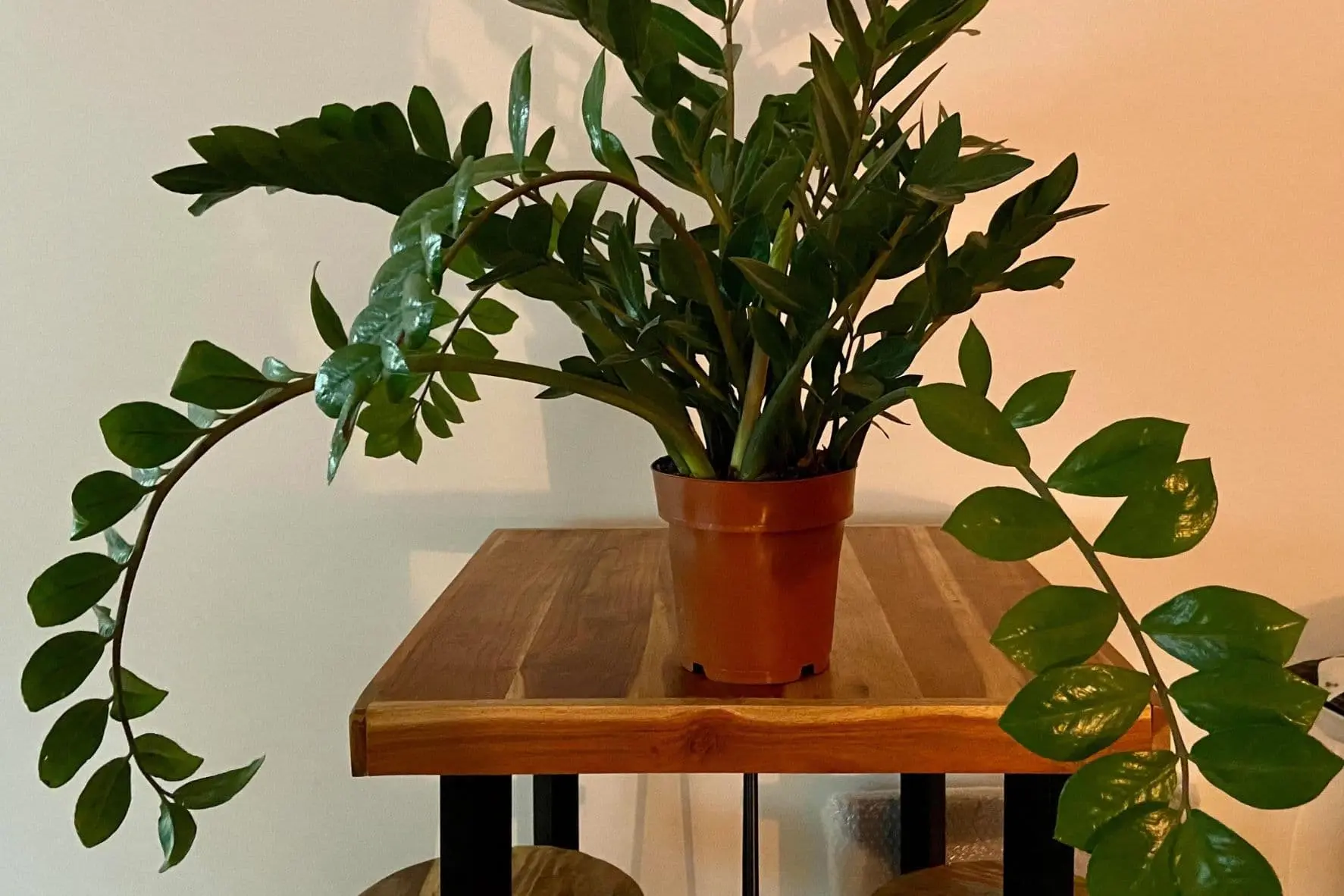The ZZ plant, scientifically known as Zamioculcas zamiifolia, is a popular choice among indoor plant enthusiasts.
With its attractive glossy green foliage and reputation for being low-maintenance, it’s no wonder why the ZZ plant has become a staple in many households.
However, like any other plant, ZZ plants can occasionally experience issues, such as drooping leaves.
If you’ve noticed your ZZ plant looking a bit sad with drooping foliage, there are several factors to consider in order to address the issue and revive your plant’s health.
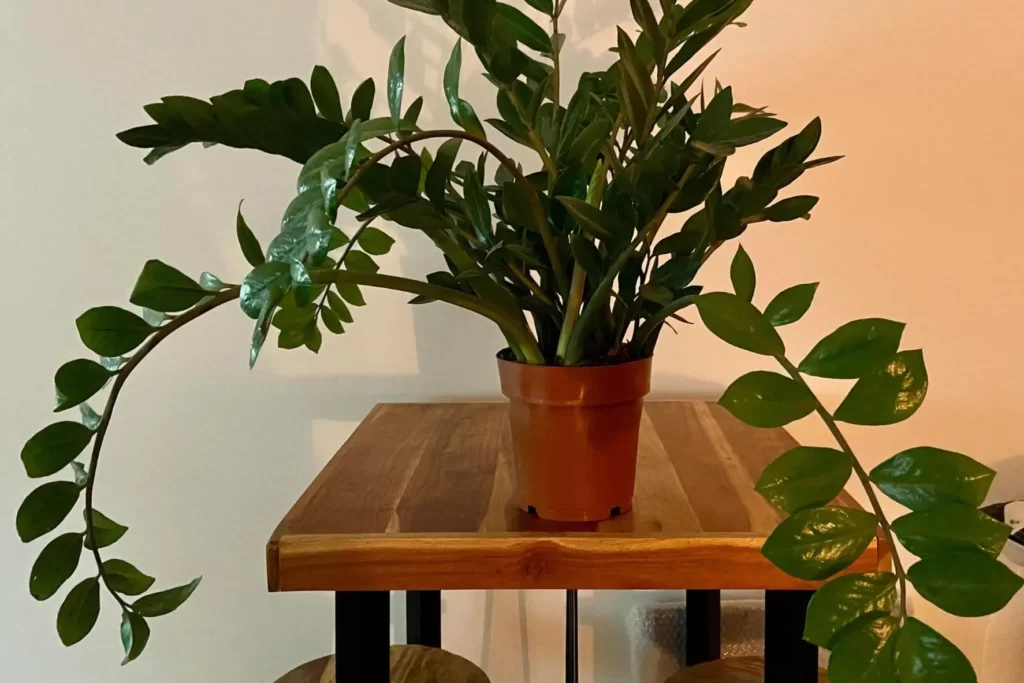
What does mean by ZZ plant drooping?
When we say that a ZZ plant is drooping, it means that the leaves and stems of the plant are bending or hanging downward instead of standing upright.
Drooping is a visible sign that something is amiss with the plant’s health or environmental conditions. It is an indication that the plant is under stress or not receiving the necessary care it needs to thrive.
ZZ plant leaves are typically upright and firm, so when they start to droop, it suggests that there is an issue that needs attention.
Why is my ZZ plant drooping & how to fix them?
ZZ plants are known for their resilience and low-maintenance nature, but even these tough plants can start to droop if they’re not cared for properly.
There are a few common reasons why a ZZ plant might droop, and most of them can be easily fixed.
Overwatering:

One of the most common reasons for a ZZ plant to droop is overwatering. ZZ plants have rhizomes, which are thick underground stems that store water.
This adaptation makes them quite drought-tolerant. However, when they receive excessive water, the rhizomes can become waterlogged, leading to root rot.
This can cause the plant’s leaves to become soft and droop. To prevent overwatering, allow the soil to dry out partially between waterings.
ZZ plants prefer a slightly dry environment, so it’s important not to keep the soil constantly moist. Ensure proper drainage by using well-draining soil and a pot with drainage holes.
Underwatering:
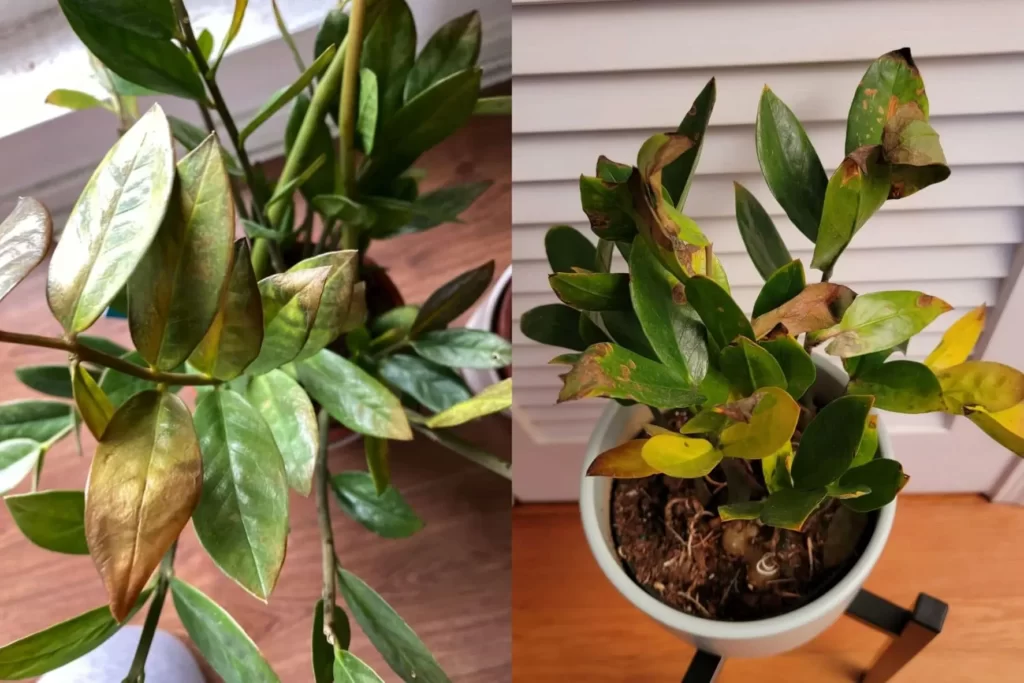
While overwatering is a common issue, underwatering can also cause drooping leaves in ZZ plants. If the soil becomes too dry for an extended period, the plant may not receive enough water, leading to dehydration and wilting.
ZZ plants prefer to be slightly on the dry side, but they still require regular watering. To resolve this issue, thoroughly water the plant until water drains out of the bottom of the pot, and then allow the soil to dry out partially before watering again.
Strike a balance between keeping the soil moist and not letting it completely dry out.
Lack of light:
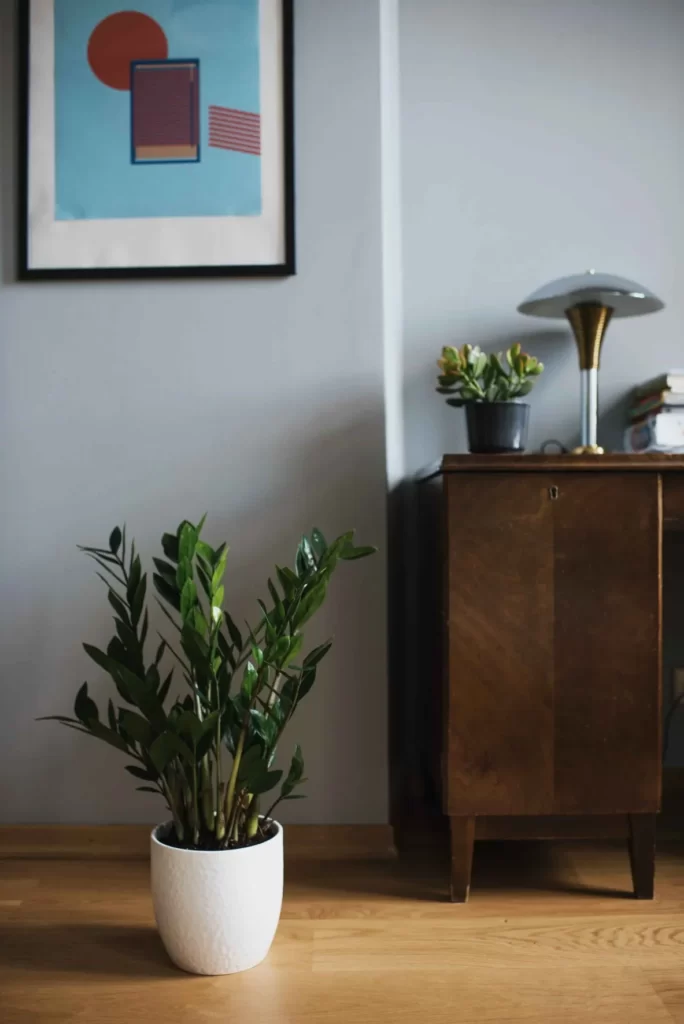
ZZ plants are known for their ability to tolerate low light conditions, but they still require some amount of light to thrive. Insufficient light can cause the plant to become weak and droopy.
If your ZZ plant is placed in a dark corner or receives only minimal natural light, consider moving it to a brighter location, such as near a window with indirect sunlight. Avoid exposing the plant to direct sunlight as it can scorch the leaves.
If natural light is limited, you can also supplement with artificial grow lights to provide the necessary light intensity for the ZZ plant’s growth.
Temperature extremes:
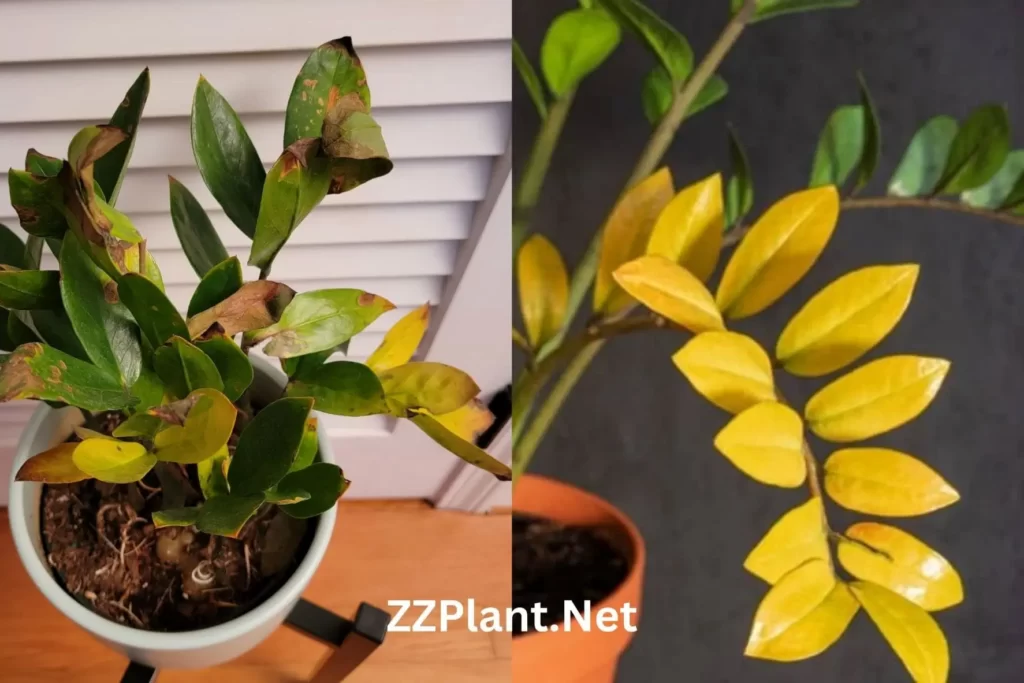
ZZ plants prefer moderate temperatures between 65°F and 75°F (18°C to 24°C). Exposure to extreme cold or hot temperatures can stress the plant and cause leaf drooping.
Keep your ZZ plant away from drafts, air conditioning vents, and radiators that can create temperature fluctuations.
Cold drafts can cause chilling injury, while hot, dry air can lead to dehydration. Maintain a stable temperature within the preferred range to ensure the plant’s well-being.
Nutrient deficiency:

Like all plants, ZZ plants require nutrients to grow and remain healthy. A lack of essential nutrients, particularly nitrogen and potassium, can result in drooping leaves.
ZZ plants are generally low-maintenance when it comes to fertilization, but they still benefit from occasional feeding.
During the growing season (spring and summer), you can fertilize your ZZ plant with a balanced houseplant fertilizer.
Follow the instructions on the fertilizer packaging for proper dosage and frequency. Be cautious not to over-fertilize, as this can lead to salt build-up and root damage. Always dilute the fertilizer according to the recommended ratio.
Pests and diseases:
While ZZ plants are generally resistant to pests and diseases, they can still be susceptible to certain issues.
Pests like spider mites and mealybugs can infest the plant, leading to weakened foliage and drooping leaves.
These pests can sap the plant’s energy and nutrients, causing it to become stressed and exhibit signs of decline.
Regularly inspect your ZZ plant for any signs of pest infestation, such as webbing, tiny insects, or sticky residue on the leaves.
If you notice any pests, take appropriate measures to control them. You can try using insecticidal soap or neem oil, which are effective and safe options for treating common houseplant pests.
Follow the instructions on the product label and repeat the treatment as necessary to eliminate the pests.
In addition to pests, ZZ plants can also be susceptible to certain diseases. Root rot, which is often caused by overwatering, can lead to drooping leaves as the roots become damaged and unable to provide proper hydration and nutrients to the plant.
If you suspect root rot, carefully remove the plant from its pot and examine the roots. Healthy roots should be firm and white, while rotted roots are usually mushy, discolored, and have a foul smell.
If root rot is detected, you will need to trim away the affected roots and repot the plant in fresh, well-draining soil. Ensure that the new pot has drainage holes to prevent waterlogging and further root rot.
Root-bound plant:
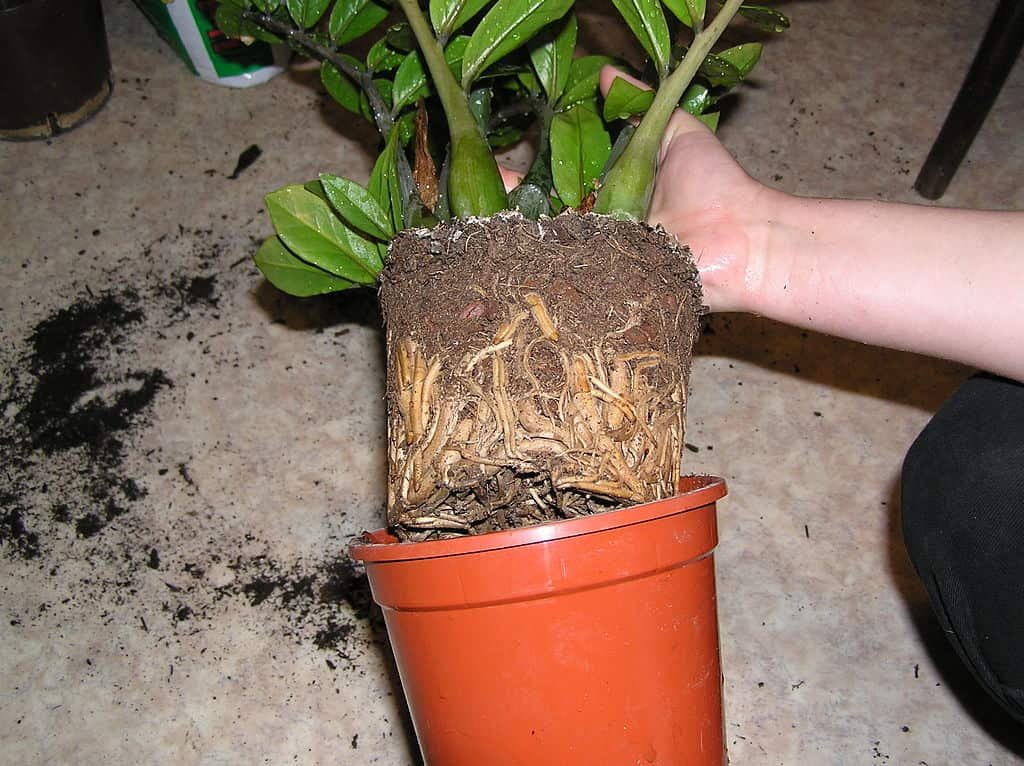
Another possible cause of ZZ plant drooping is when the plant becomes root-bound. This occurs when the roots outgrow the available space in the pot, resulting in limited nutrient uptake and restricted growth.
If your ZZ plant has been growing in the same pot for an extended period, it may be time to repot it into a larger container.
Gently remove the plant from its current pot and inspect the roots. If you see a dense mass of roots circling around the root ball, it’s an indication that the plant is root-bound.
Carefully untangle and trim some of the roots before transferring the plant into a slightly larger pot with fresh potting soil. This will provide the plant with more room for growth and encourage healthy foliage.
Environmental factors:
ZZ plants can be sensitive to environmental changes, and sudden shifts in conditions can cause stress and lead to drooping leaves.
Factors such as drafts, temperature fluctuations, and exposure to chemicals or pollutants can all impact the health of the plant.
Keep your ZZ plant away from doors, windows, and air vents where drafts can occur. Avoid placing it near heaters, air conditioners, or radiators that can create temperature extremes.
Furthermore, keep it away from areas where it may be exposed to chemicals or pollutants, such as cleaning agents or cigarette smoke.
Providing a stable and clean environment will contribute to the overall well-being of your ZZ plant.
Why ZZ plant drooping after repotting?
There are a few reasons why your ZZ plant might be drooping after repotting.
- Transplant shock: When you repot a plant, it can go into a state of shock as it adjusts to its new environment. This can cause the leaves to droop and the plant to look unhealthy.
- Root damage: If the roots of your plant were damaged during repotting, this can also cause the plant to droop.
- Overwatering: After repotting, it’s important to water your plant less frequently than you did before. This is because the plant will have less roots to absorb water. If you overwater your plant, this can cause the roots to rot and the plant to die.
- Underwatering: If you don’t water your plant enough after repotting, this can also cause the plant to droop. The plant needs water to survive, and if it doesn’t get enough, it will start to wilt.
If your ZZ plant is drooping after repotting, the best thing to do is to wait and see if it recovers on its own. If it doesn’t, you can try the following:
- Reduce watering: If you think you might be overwatering your plant, reduce the amount of water you give it. Only water your plant when the soil is completely dry.
- Check the roots: If you think the roots of your plant might be damaged, check them carefully. If you see any damaged roots, cut them off with a sharp knife.
- Repot in a smaller pot: If you think the pot your plant is in is too big, repot it in a smaller pot. This will help the plant to recover more quickly.
With a little patience and care, your ZZ plant should recover from its drooping and start to grow again.
Here are some additional tips for repotting your ZZ plant:
- Choose the right pot: The pot you choose for your ZZ plant should be only one size larger than the pot it is currently in. A pot that is too large can cause the plant to become rootbound, which can lead to problems.
- Use the right soil: ZZ plants prefer well-draining soil. You can use a commercial potting mix that is designed for houseplants, or you can make your own by mixing equal parts potting soil, perlite, and sand.
- Water the plant thoroughly after repotting: After you repot your ZZ plant, water it thoroughly until water runs out of the drainage holes in the pot. This will help to settle the soil and prevent the roots from drying out.
With proper care, your ZZ plant should thrive in its new pot.
FAQs:
Yes, underwatering can also cause ZZ plant drooping. When a ZZ plant doesn’t receive enough water, it can become dehydrated, leading to wilting and drooping leaves. Water the plant thoroughly and allow the soil to partially dry out before watering again.
ZZ plants can tolerate low light conditions but still require some amount of light to thrive. They prefer bright, indirect light. Place your ZZ plant near a window with filtered sunlight or provide artificial grow lights to ensure it receives adequate light to prevent drooping.
To prevent ZZ plant drooping, ensure you provide the plant with the right amount of water, adequate light, stable temperatures, proper nutrition, and a comfortable growing environment. Avoid overwatering or underwatering, provide sufficient light, maintain a suitable temperature range, fertilize during the growing season, and watch out for pests and diseases.
Yes, repotting can cause temporary drooping in ZZ plants. The process of repotting can disrupt the plant’s root system and cause stress. However, with proper care and time, the plant should recover and regain its normal appearance.
The recovery time for a drooping ZZ plant can vary depending on the underlying cause and the plant’s overall health. With appropriate care and addressing the specific issue, you may notice improvements within a few weeks. However, it can take longer for the plant to fully recover, so be patient and continue providing optimal care.
It is not necessary to prune the drooping leaves on your ZZ plant unless they are completely wilted or dead. Drooping leaves can recover their turgidity with proper care, so it’s generally best to leave them intact. However, if you prefer a tidier appearance, you can prune the damaged or wilted leaves. Ensure to use clean, sterilized pruning tools to prevent the spread of diseases.
Conclusion
Drooping leaves in a ZZ plant can be attributed to various factors, including overwatering, underwatering, insufficient light, temperature extremes, nutrient deficiency, pests, diseases, and being root-bound.
By carefully assessing these potential causes, you can take appropriate measures to address the issue and revive your ZZ plant’s health.
Remember to strike a balance in watering, providing adequate light, maintaining suitable temperatures, ensuring proper nutrition, and regularly inspecting for pests and diseases.
With proper care and attention, your ZZ plant will bounce back and continue to thrive, displaying its stunning glossy foliage once again.

